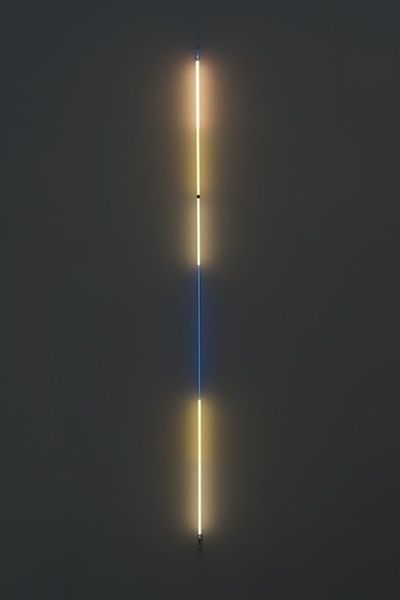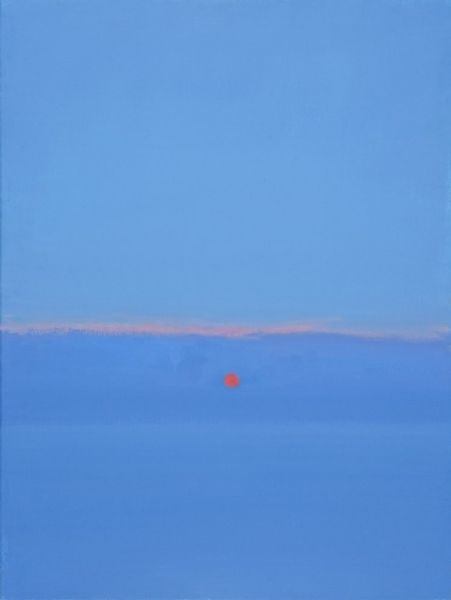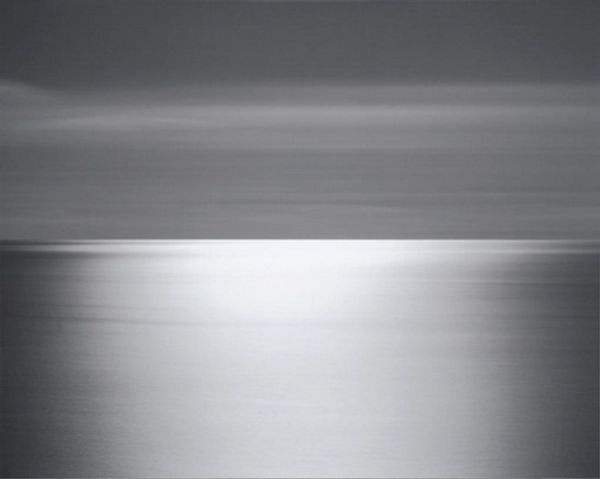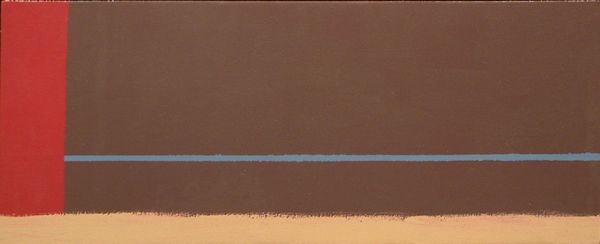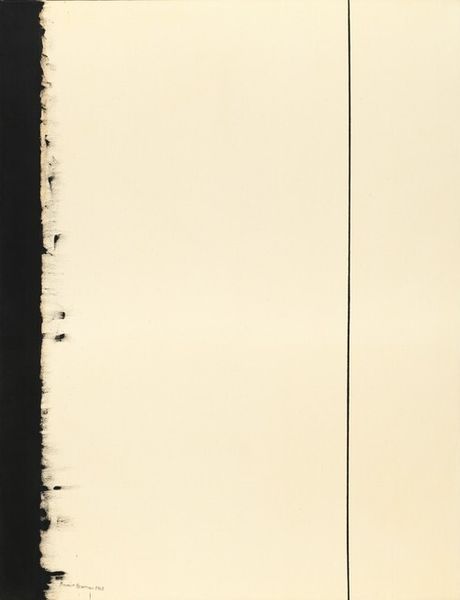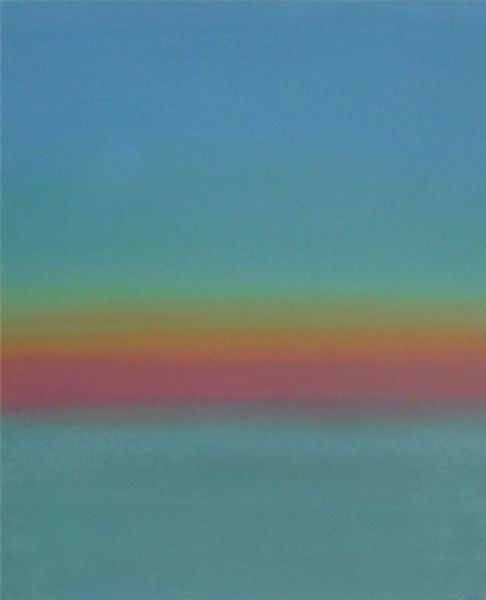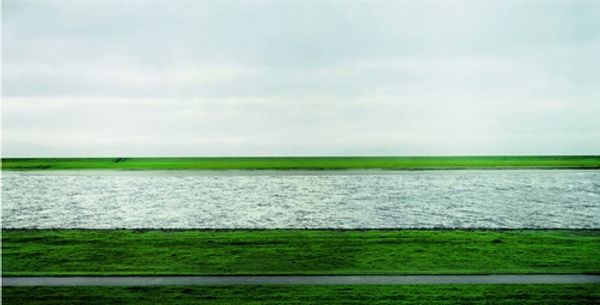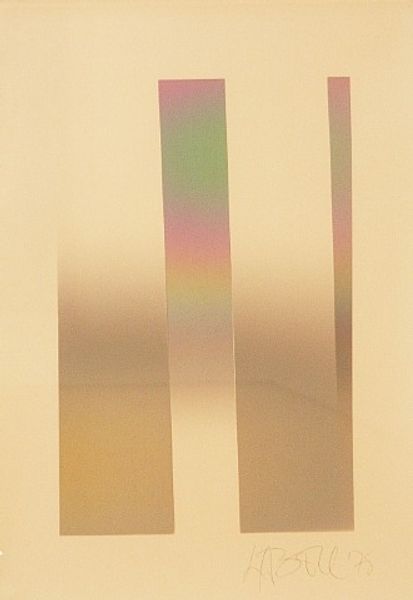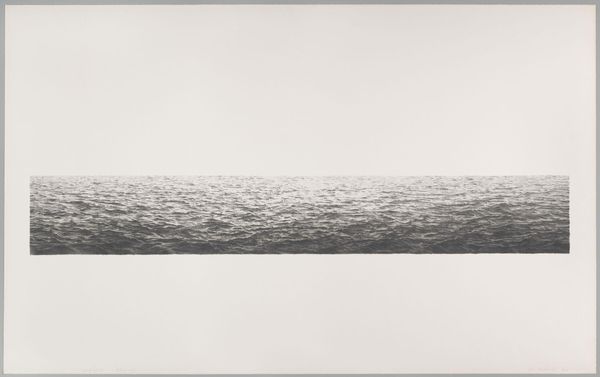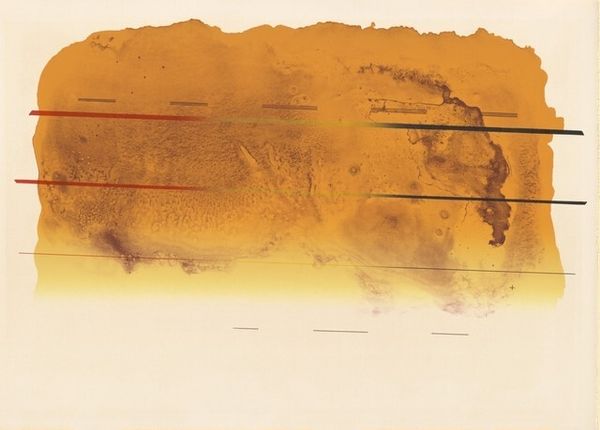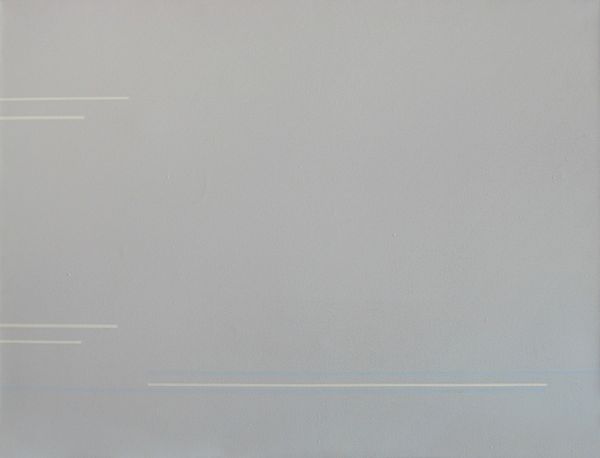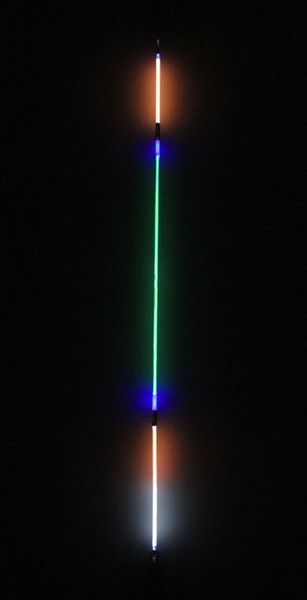
installation-art
#
light-and-space
#
neo-conceptualism
#
conceptual-art
#
minimalism
#
installation-art
#
abstraction
#
line
#
digital-art
Copyright: Laddie John Dill,Fair Use
Editor: So, this is Laddie John Dill’s "Light Sentence- Saffron" from 1971. It's essentially a horizontal line of light, like a fluorescent tube, installed on the wall, with different colors on each end. What do you see in this piece, beyond just a minimalist light fixture? Curator: The "Light Sentence" series compels us to consider the socio-political context of its time. Minimalism, emerging from the '60s, presented itself as a counter-narrative to the dominating consumerism and oppressive politics. Dill's work particularly investigates institutional critique and social control. Light itself, seemingly intangible, becomes a material to define, perhaps confine, space and, metaphorically, ideas. Consider also, the Light and Space movement, the questioning of perception, form, and industrial materials. The use of artificial light – how does this challenge traditional art's dependence on natural illumination and therefore, the status quo? Editor: That's interesting, I never really considered minimalism as being overtly political. So, are you saying that this piece is less about the aesthetic of light and more about the concept of societal restrictions? Curator: It's both, isn't it? The line, the barrier, even the title "Light Sentence," all imply constraints. The colors could even symbolize division. Think about who gets access to brightness, opportunity—versus those relegated to shadow or, metaphorically, a "sentence". Is this symmetry a reflection of balanced power or artificial equality? How do our lived experiences color our perception of "light"? Editor: That gives me a lot to think about, how simple materials can convey a profound message. Curator: Indeed. Dill provides space to question established norms. It's not just about what we see, but what societal narratives influence our view.
Comments
No comments
Be the first to comment and join the conversation on the ultimate creative platform.
